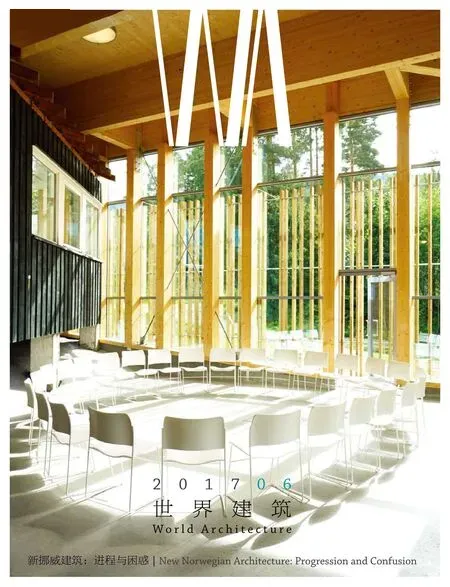斯迈斯特回收中心,奥斯陆,挪威
2017-07-12建筑设计隆格瓦建筑事务所
建筑设计:隆格瓦建筑事务所
斯迈斯特回收中心,奥斯陆,挪威
建筑设计:隆格瓦建筑事务所

1 外景/Exterior view
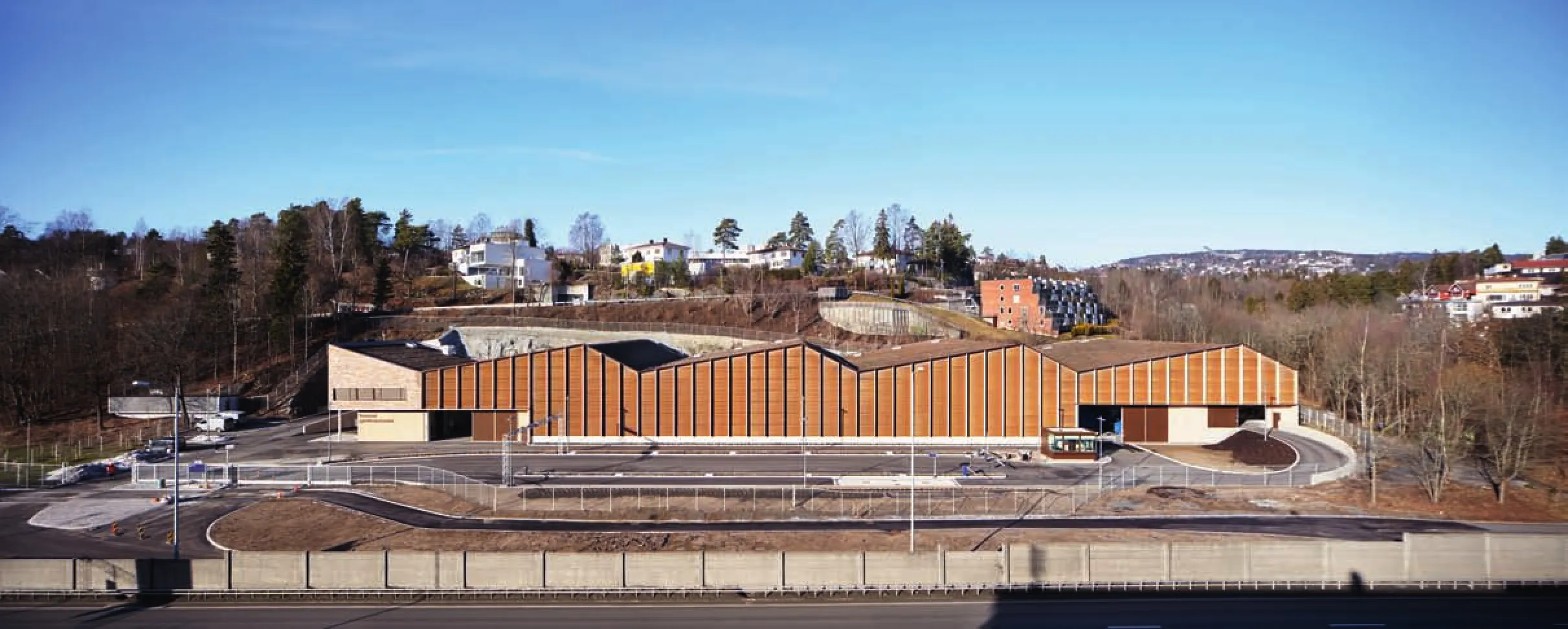
2 外景/Exterior view
项目信息/Credits and Data
客户/Client: Waste Disposal Authority, Oslo
主持建筑师/Principal Architect: Knut Longva MNAL
设计团队/Design Team: Nils Köplin MNAL, Ewan Smith, Michael Nordtømme
总建筑面积/GFA: 6000m2
材料/Materials: 预制混凝土构件、砖、耐候特种钢板网/Prefabricated concrete elements, brick, expanded metal sheets of corten steel
造价/Cost: 170,000,000 NOK
设计时间/Design Time: 2011-2013
建成时间/Completion Time: 2015
摄影/Photos: Ivan Brodey
对于霜霉病的防治应在发病初期及时进行喷药治疗,可以选用75%的百菌清可湿性粉剂600倍液、40%灭菌丹可湿性粉剂400倍液、70%代森锰锌可湿性粉剂500倍液、58%甲霜灵锰锌可湿性粉剂500倍液、40%的乙磷铝可湿性粉剂200~300倍液进行轮换使用,每隔一周左右喷药一次,喷药3次左右即可。
斯迈斯特回收中心为人们呈现出一种新的建筑原型。这是一幢将所有废品处理作业都置于室内的公共服务设施。
回收中心是一个外观粗犷、无人工环境调节系统的大厅,其内部分为两部分:一个是公共空间,另一个用于回收作业。在建筑的一端,有一座与之相连的管理和基础设施用房,其中包含危险垃圾处理区、员工更衣室、咖啡厅、办公室和设备用房。
锯齿型的屋顶给建筑的巨大体量做了有节奏感的划分。回收大厅的侧立面和后立面大部分被实墙封闭起来。面对环路的主立面是开放的,它由挂接在木胶合板柱之间的多孔金属板构成。
建筑使用中的物流设计是设计评估中的一个重要标准。当地政府的总体规划严格地规定了建筑的选址和尺寸。关键的设计目标之一是最大限度地利用交通流线和公共停车位,从而保证充足的废品处理和机械操作空间。大厅内有34个停车位和16个废品处理单元。公共区域被抬升了2m,高于作业区之上。厂房外部空间主要由一个大型货栈构成,用于控制大厅内和附近道路上的交通流量并且疏解拥堵。
该项目在环境保护方面怀有很大抱负。建筑由低能耗材料建成。表皮使用了混凝土、砖块、木胶合板和耐候钢制成的多孔金属板。整个屋顶覆满了景天属植物。由人工调节系统控制的建筑部分也达到了欧盟能源标签A级(黄色)的标准。(张裕翔 译)
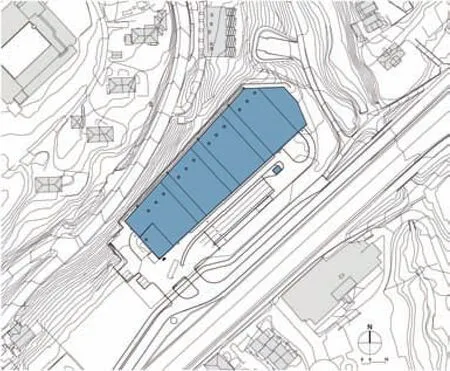
3 总平面/Site plan
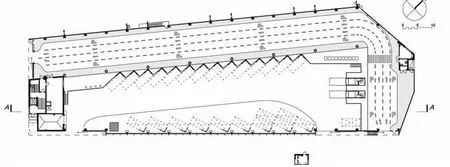
4 平面/Plan
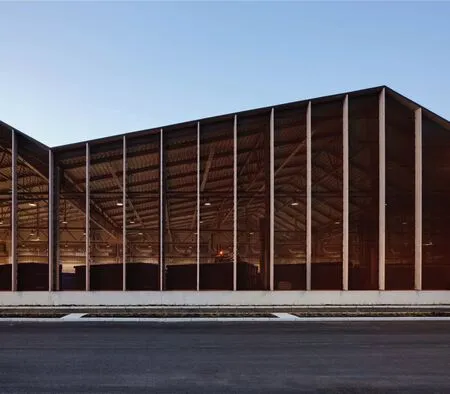
5 外景/Exterior view
Smestad Recycling Centre represents a new building typology. It is a facility for the public where all waste handling takes place indoors.
The recycling centre is a robust, unclimatised open hall with two distinct areas: one for the public and one for operations. There is an integrated, climatised service and management building at one end, with areas for hazardous waste and maintenance, changing rooms and cafeteria for employees, as well as offices and technical rooms.
The building has a saw-tooth roof that gives the large volume a subdivision and rhythm. The recycling hall's back and sidewalls are predominantly closed. The main façade towards the ring road is open, clad with expanded metal sheets mounted between the columns of laminated wood.
The operational logistics were an important design criteria. The local authority's master plan gave strict limits to the buildings placement and size. It has been important to maximise traffic flow and parking for the public, to ensure sufficient slots for the waste fractions, and to give adequate manoeuvring area for operations. The hall has space for 34 cars without trailer and 16 waste fractions. The public area is raised 2 metres over the operations yard. The outside space consists mainly of a large queue magazine to control traffic flow and avoid congestion both inside the hall and on the adjacent approach roads.
The project has high environmental ambitions. The building is constructed from low impact materials Facades are of concrete, brick, laminated wood and expanded metal of weathering steel. The entire roof is planted with sedum. The climatised part of the building achieves an EU energy label A (yellow).

6 剖面/Section

7 东南立面/Southeast elevation
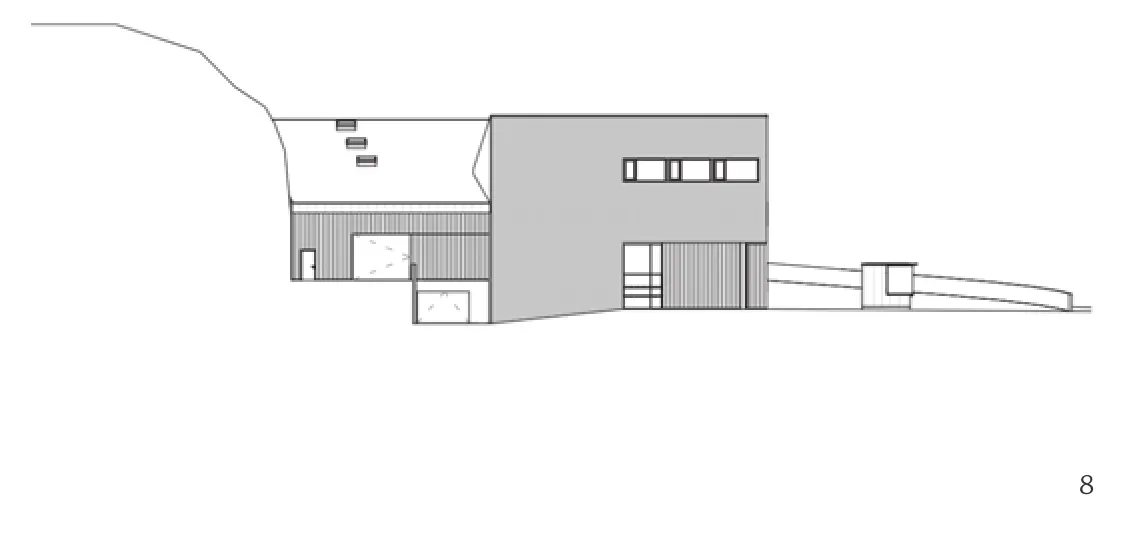
8 西南立面/Southwest elevation
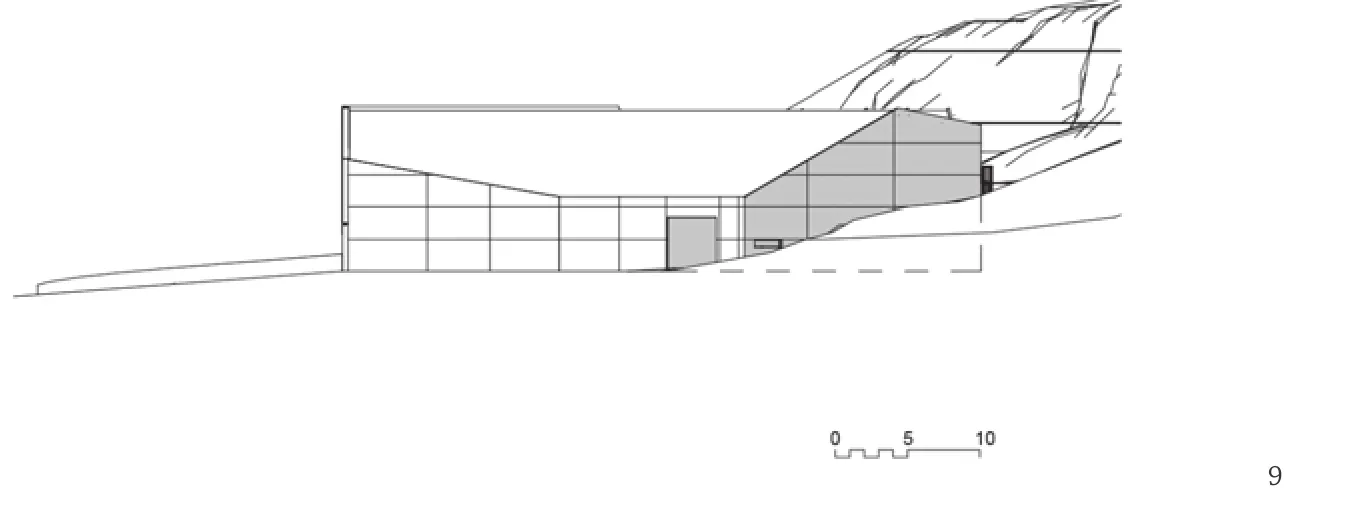
9 东北立面/Northeast elevation
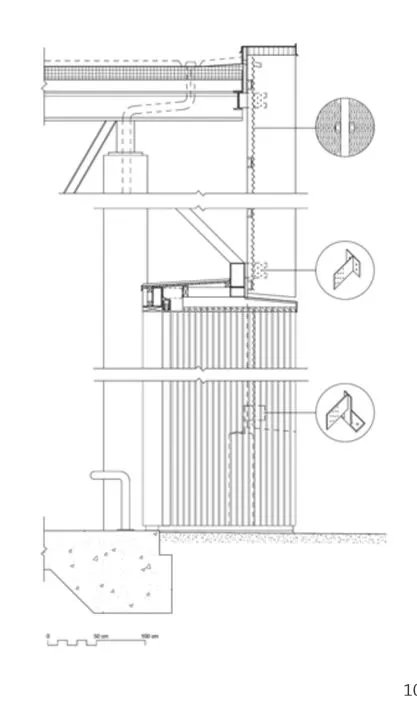
10 细部图/Details drawing

11 内景/Interior view
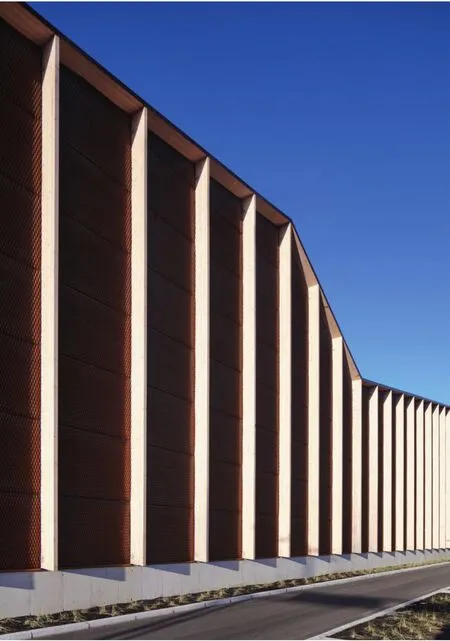
12 外景/Exterior view
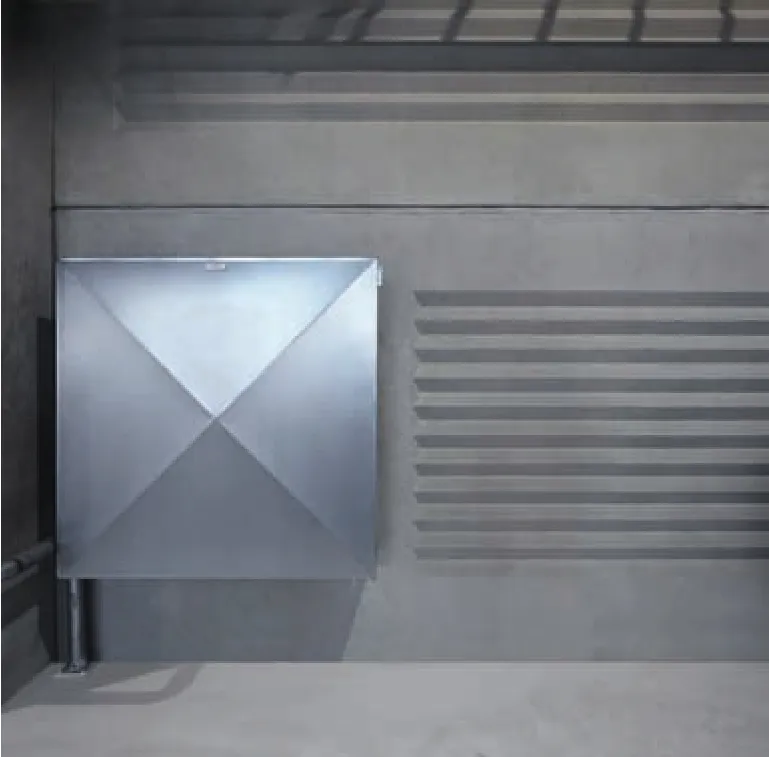
13 细部实景/Detail view
评论
周宇舫:如果单看外景照片,我无法将此建筑与“回收中心”关联起来,而更像一个社区的活动中心或社区图书馆建筑,有一种社区公共建筑的亲切感。当知道这是一个回收中心,其形象似乎与记忆中的“废品回收站”和国内社区中类似的公共设施相去甚远,从而竟有几分质疑其是否过于精致了。当然,每一栋建筑都应该是精致的,精致也代表了对于此类建构的一种认识,可以被理解为将功能化的基础设施构筑物,转化为一个尺度宜人、材料人性化的公共建筑。这本身就传递了对于废品回收的态度,是人与自然之间的情感关系,而非简单的物质取舍,也使其非工业产品化的形象构成了富有人情味的社区风景。
佘依爽:克努特·隆格瓦作为隆格瓦建筑事务所的创始人1986年毕业于苏黎世联邦理工学院,2011年开始设计的斯迈斯特回收中心应该是其事务所比较重要的阶段性项目,在主要的交通流线之上,建筑有种满足功能性之外的节奏感。这类垃圾回收站的建筑设计是少有人关注的领域,却仍旧淋漓尽致地体现出了其特有的韵律和材料细节,令人感叹。
Comment
ZHOU Yufang: If merely looking at the exterior photos, I could not associate this building with a "recycling centre". With a sense of intimacy which most public community buildings bear, it looks more like a community centre or library. When I realised that this is a recycling centre, I thought its appearance is far from those public facilities in our community which pop up in my mind. Therefore, I even began to raise a question like whether it is too delicate. Of course, each building should be refined. This kind of construction also represents the idea that some functional infrastructure can be turned into a standard and pleasant public building, with even humanised materials. Thus, the architectural operation itself conveys the attitude of waste recycling. There is emotional relationship between man and nature and it is more than just a simple material choice. Besides, the non-industrial image of the building makes a landscape in a humane community. (Translated by QI Yiyi)
SHE Yishuang: Knut Longva, as the founder of Longva Arkitekter, graduated from ETH in 1986. Started from 2011, the design of Smestad Recycling Centre should be one of the most important projects for the practice. Apart from its main circulation logic, the building has a kind of rhythm beyond mere functionality. This typology, garbage collection station, is of rare concern in the architectural realm. However, the building vividly reflects its unique rhythm and material details, which is so impressive. (Translated by QI Yiyi)
Smestad Recycling Centre, Oslo, Norway, 2015
Architect: Longva arkitekter

14 内景/Interior view
